Scientific Diving Success Story: Caitlyn Livsey
Caitlyn Livsey (Penn State, M.S. Geosciences 2015) is currently working on her Ph.D. in Earth and Planetary Sciences at the University of California-Davis with Dr. Howie Spero. Her research uses the geochemistry of planktonic foraminifera to reconstruct paleooceanography. As a member of the culturing team at UC-Davis, she participates in a team of researchers who capture living planktonic foraminifera and grow them in the lab under controlled conditions. The purpose of this work is to understand how these organisms react to certain environmental perturbations- specifically in terms of the chemical signatures recorded in their calcium carbonate tests. Some species of planktonic foraminifera have very fragile calcite spines, and therefore must be captured using blue water SCUBA techniques. While the majority of foraminifera live in the upper 10 m of the water column, the typical depth focus of their captures, the fragile-spined organisms host photosynthetic symbionts, and therefore live in the photic zone (upper 200 m of the water column). The dive team consists of about 3 collectors, a safety diver, and at least one person manning the boat. The divers are attached to a trapeze, which maintains their position in the water and also allows divers to easily get the attention of the rest of the team. The collectors shift their focus in and out to look for foraminifera, which are small (<1mm) “puff balls” that appear orange due to the photosymbionts. Once captured, the foram-containing jars are returned to the lab, and each specimen gets a unique identifier, is labeled, measured, and then chosen for an experiment. Our lab group works out of the Wrigley Marine Research Center on Catalina Island during the summer season. The following link arrives at a youtube video made by Dr. Spero and explains the research: https://www.youtube.com/watch?v=6MakjP6MkdE(link is external).
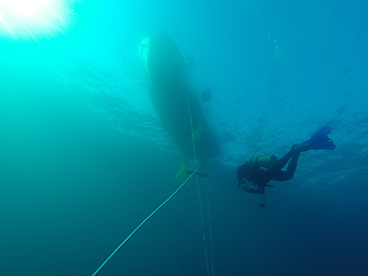
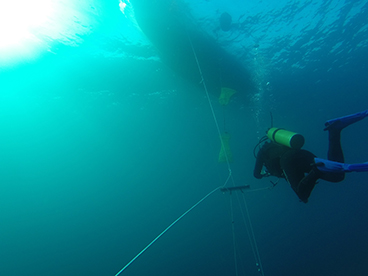
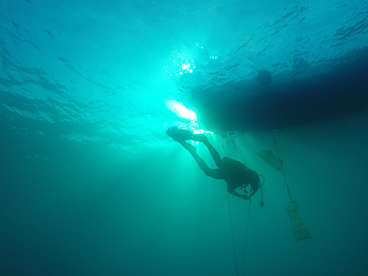
The photos above show different views of the blue water rig that each diver is attached to by a line that goes through a loop in a trapeze and has a weight on the opposite end. If the safety diver needs to get the attention of the divers, they simply tug on the diver’s line. There are two yellow mesh bags attached to a separate line; one on the bottom holds “empty” (filled with seawater) jars, and the top bag holds jars that contain sampled foraminifera (or two if you are advanced!). Divers use the bottom of the boat, or the sun to better see the foraminifera in the water column. The diver is UC-Davis post-doctoral researcher Oscar Branson.
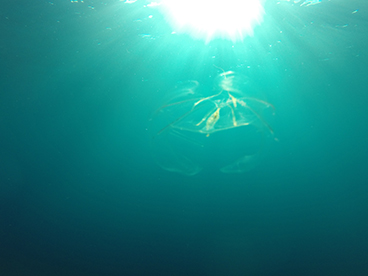
Unidentified jellyfish. Dives are commonly about an hour long so the safety diver tends to get bored staying in one place with not much besides blue to look at! Usually when there are a lot of jellyfish in the water column, fewer foraminifera are encountered and sampled.
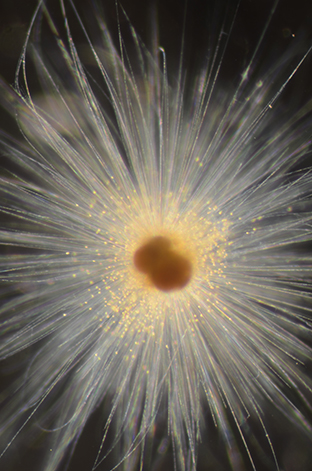
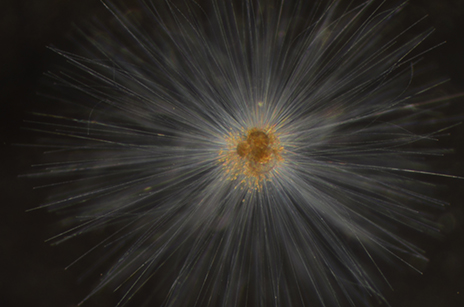
The two photos above are photomicrographs of planktonic foraminifera (Orbulina universa) at 10x and 4x magnification. The spines are single calcite crystal needles, and the little orange dots on the spines are symbiotic dinoflagellates. The primary chambers are in the center and the dark orange mass within the chambers is the cytoplasm.
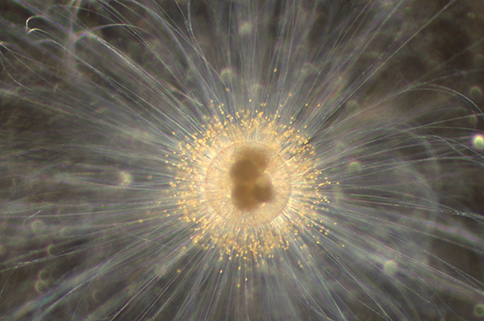
Photomicrograph of an adult Orbulina universa (10x), with its sphere, the final chamber that this species calcifies. The juvenile chambers can still be seen within the sphere.
